2. Overview of Logistics and Industry Re-Organization
2.1 Framing the Problem
The term logistics pertains to the way firms organization themselves in relation to transportation, warehousing, inventories, customer service and information processing. The phrase "advanced logistics" is shorthand for technologies and business processes that permit firms to reduce costs by substituting transportation, e-commerce and just-in-time deliveries for large inventories, multiple warehouses and customer service outlets. Firms can and do re-organize in response to transportation infrastructure improvements so as to reap the rewards of advanced logistics [1]. However, the effect of such re-organization on the economic benefits of freight and highway investment is not well understood.
Prior to formulating the micro-economic framework, we present a "meta-analysis" – an influence diagram that maps the key variables and the various relationships that exist between them. An arrow is used from input to output with a sign indicating the effect of a change in input, either positive or negative. Relationships that have notable delayed effects are labeled by the letter "D" accordingly. Positive and negative feedback loops are identified such that positive feedback occurs when increases in one variable generates net increases throughout the chain feeding back to the original variable. This type of loop often results in exponential growth. Negative feedback occurs when positive response in a variable results in a negative effect feeding back to itself when seen through the cause and effect chain. This type of link results in asymptotic behavior towards some limiting value. The combination of positive and negative feedback loops generates time dependent system behavior that is often counter-intuitive at first sight.
2.1.1 Meta-Analysis of Freight Economic Relationships
Investment in highway improvement projects will affect attributes of links within the US transportation system. In particular, flow capacity may be increased by the addition of additional lanes, increases in speed limits from wider and safer roads, limited access highways, and operational/ITS improvements. There may also be fewer restrictions on truck weights, improved bridge clearances etc. Further improvements could be made to ports/customs thereby smoothing and increasing net system traffic flow. All these improvements result potentially in travel time savings and increased reliability. These and other downstream effects are shown diagrammatically at Exhibit 1.
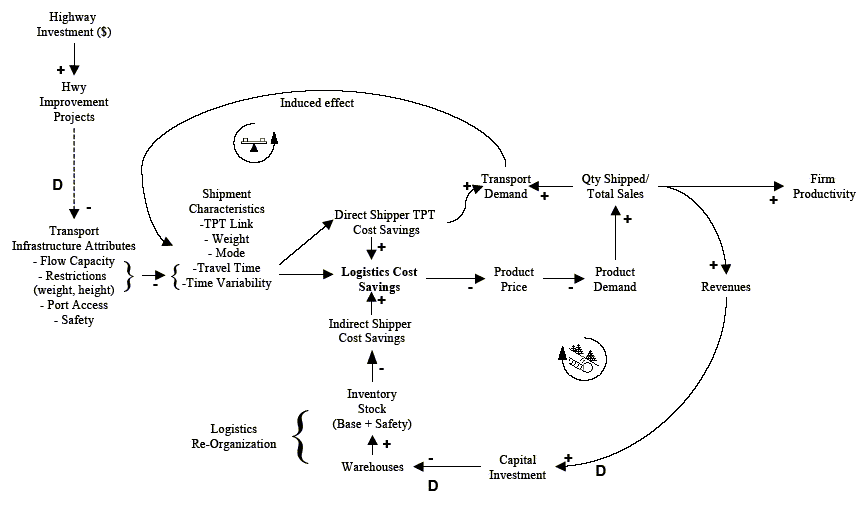
Exhibit 1: Freight Economics Influence Diagram
As previously discussed, reductions in travel time and travel time variability have a direct and indirect effect on logistic costs. NCHRP 2-17(4) [2] developed an approach to quantify these relationships based on individual case studies, reviewed in section 3.5. The previous NCHRP 342 [3] study took a different view. Assuming logistics cost savings were known, it quantified benefits due to increased use of transportation while keeping output fixed.
Productivity gains occur within industries at the level of the firm. The potential for firms to re-organize their logistics systems and policies will occur according to specific trade-offs between logistics components. The 2-17(4) study examined the firm's change in logistics cost as a function of changes in transport times. Based on a sample of case studies, an aggregate of the sensitivity of industry logistics cost savings to travel time savings was estimated. This study limited its analysis to situations in which output remained fixed.
The present study develops a general framework and economic theory for the economics of freight while at the same time being empirically practical. The empirical estimation is the subject of a later research paper although comments shall be made as to the framework's applicability.
The goal is to develop a theoretical framework that is sound and can quantify the true benefits of infrastructure investment while at the same time being practicable in terms of available information and research efficiency. The approach will need to be strategic in nature while at the same time being sensitive to changes at the level of the firm according to various transportation services used.
2.2 Integrating Re-organization Effects
In considering the substance of the issues being addressed in this paper, it is useful to refer back to the broad classification of benefits set out in the proposal.
The central question posed here is whether benefits categorized in Table 1 as "second-order" and "third-order" are captured in the conventional micro-economic foundations and measurement framework of Benefit-Cost Analysis. Before addressing the question directly, we examine the nature of the re-organization effects at-issue.
| First-order Benefits | Immediate cost reductions to carriers and shippers, including gains to shippers from reduced transit times[1] and increased reliability. |
|---|---|
| Second-order Benefits | Reorganization-effect gains from improvements in logistics[2]. Quantity of firms' outputs changes; quality of output does not change. |
| Third-order Benefits | Gains from additional reorganization effects such as improved products, new products, or some other change. |
| Other Effects | Effects that are not considered as benefits according to the strict rules of benefit-cost analysis, but may still be of considerable interest to policy-makers. These could include, among other things, increases in regional employment or increases in rate of growth of regional income. |
2.3 Nature of Re-Organization
Logistics systems are key enablers of economic development. Governments can adopt policies that will encourage overall logistics efficiency. In some instances, logistics costs can amount to 30% of delivered costs. In efficient economies, these costs can be as low as 9.5% [4]. Transportation charges account for nearly 40% of all logistics costs.
Freight transport continues to evolve. According to work done for the World Bank [4], truck trips of less than 50 miles account for:
- 80% of trips made,
- 74% of tons carried,
- 66% of revenues earned,
- 36% of vehicle miles travelled.
Trucks also serve as the access and egress mode for maritime, air, intermodal, and many rail trips. Short haul trips are therefore an essential component of the economy.
Logistics costs are driven by activities that support the logistics process. Trade-offs are possible among the elements of logistics costs in order to minimize total costs given customer service level objectives. The main components of logistics costs are:
- Transportation costs
- Warehousing costs
- Order processing/Information systems costs
- Lot quantity costs
- Inventory carrying costs
These elements are inter-related and various trade-offs exist. It is worth noting that some of these trade-offs are not realized in a continuous way. Consolidation of warehouses occurs at a discrete point in time and this will be different for various firms based on their decision to invest in new logistics systems. The primary goal of the firm in developing its logistics strategy is to provide customer service while reducing costs thereby increasing its profits and being competitive.
Any framework for quantifying the benefits of freight productivity from highway improvements must be able to account for firm-level adaptation of its logistics. Although case studies will be useful to quantify firms' response to infrastructure improvements, methods must be able to aggregate benefits at the market or commodity level[3]. The objective of this White Paper is to delineate the scope of the study and to establish a theoretical framework on which to base further work. Considerations of parameter estimation are also discussed.
2.3.1 Changes in Logistics Network Infrastructure
A firm could re-organize its logistics in many ways as a result of lower transportation costs. For one, it could reduce the number of warehouses and thereby increase the use of transportation services. Four factors influence the number of warehouses a firm chooses to maintain: cost of lost sales, inventory costs, warehousing costs, and transportation costs.
Cost of Lost Sales. The cost of lost sales is the most difficult to quantify. It would generally decrease with number of warehouses and would vary by industry, company, product, and customer. The remaining cost components are more consistent across firms and industries.
Inventory Costs. Inventory costs increase with the number of warehouses because firm maintain a safety stock of all (or most) products at each facility. More total space is required overall.
Warehousing Costs. More warehouses mean more space to be owned, leased or rented. Fixed costs across many facilities are larger than the marginal variable costs of fewer locations.
Transportation Costs. Transportation costs initially decline as the number of facilities increases due to proximity. Costs eventually increase for too many warehouses due to the combination of inbound and outbound transport costs.
A firm seeking to minimize total costs, the sum of the above components, could balance all cost components by solving a multi-facility location problem. As transportation costs decline however – possibly due to highway infrastructure investment, the minimum total cost will in general occur for fewer warehouses. The nature and timing of re-organization will occur at different points for each firm. Sufficient potential gains will need to be realized before an investment hurdle rate is exceeded.
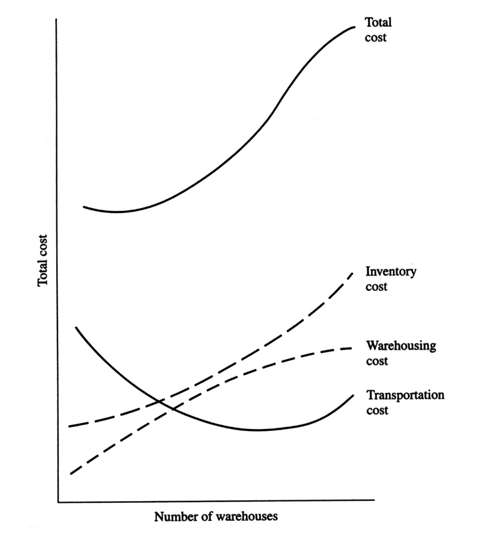
Exhibit 2: Relationship between total logistics cost and number of warehouses.
2.3.2 Changes in Inventory Policy
A simpler more rapid response to lower transportation costs, improved transit times and reduced delivery time variability is a change in a firm's inventory policy. To demonstrate the direct relevance of travel time and travel time variability on total logistics costs, consider a simple example where a firm has a central production plant and a single warehouse located within its market area.
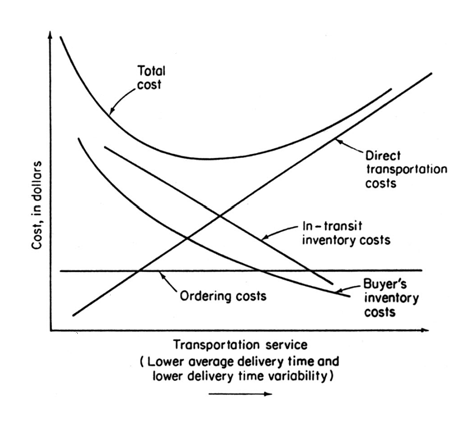
Exhibit 3: Generalized cost trade-offs for transportation services.
As direct transportation costs decrease, the minimum total logistics cost point moves to the right. A profit-maximizing firm would increase the demand for transportation services.
An increase in travel time and variability can be costly. Most obviously, money tied up in inventory isn't earning interest. The longer it takes to ship perishable goods (e.g., fresh fruit and vegetables, newspapers and magazines, high fashion clothing), the more they depreciate. It's the near elimination of travel-time variability that makes just-in-time inventory management possible.
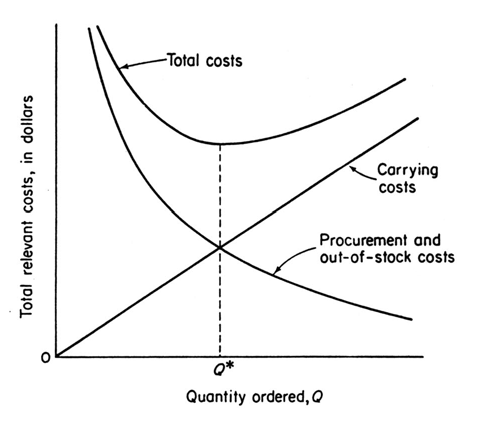
Exhibit 4: Basic inventory cost trade-offs.
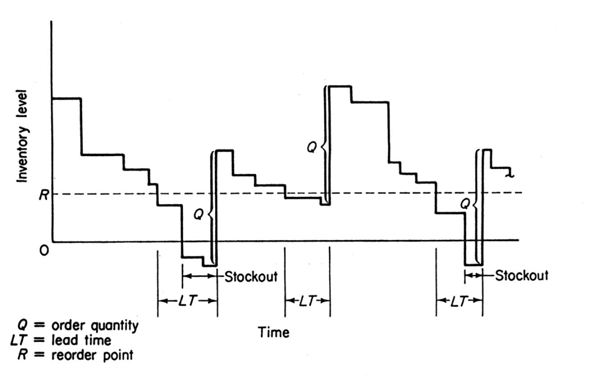
Exhibit 5: Inventory levels under a fixed order quantity-variable order interval policy.
Stockout and backorder costs[4] are a function of the lead time distribution for supply. Lead times are in turn a function of travel time and variability. Reductions in either travel time and/or travel time variability will directly impact various logistics cost components and may trigger re-organization at the level of the firm. Shorter and more predictable lead times can enable firms to reduce their reorder points and average stock levels while maintaining the same level of service. This in turn reduces logistics carrying costs.
A paper by Mohring and Williamson [5] is, to our knowledge, the first formal analysis of what Mohring refers to as "reorganization effects," the adjustments in their logistical arrangements that shippers make in response to lower costs of freight movement. Typically, these adjustments would involve fewer warehouses and more miles of truck movement as shippers take advantage of lower freight costs to consolidate storage facilities and reduce inventory costs. These effects are the principal source of benefits not captured in the conventional approach to benefit-cost analysis.
2.4 The New Supply Chain
Logistics management continues to evolve with the adoption of e-business practices and various forms of just in time (JIT) delivery. E-commerce and e-business won't reduce trade, it will increase it. Growing trade means more freight movements. The nature of these movements may evolve to more single package deliveries requiring additional transport services. New information technologies also enable JIT logistics systems that rely on dependable and inexpensive transportation. E-business may affect the nature and extent of transportation demand as well as the rate of industrial re-organization, but the logistics principles remain the same. Although they are to be included, isolating the direct effects of e-business are beyond the scope of this study.
- Carrier effects include reduced vehicle operating times and reduced costs through optimal routing and fleet configuration. Transit times may affect shipper in-transit costs such as for spoilage, and scheduling costs such as for inter-modal transfer delays and port clearance. These effects are non-linear and may vary by commodity and mode of transport.
- Improvements include rationalized inventory, stock location, network, and service levels for shippers.
- Given the recent total supply chain management phenomenon, it may be possible to group SICs which are related to the supply chain.
- Stockout periods occur when a product is not available. A key element of customer service, these periods can lead to out-of-stock costs incurred when an order is placed but cannot be filled from inventory. These costs can be classified as lost sales costs and back-order costs. Back-orders often generate additional order processing as well as transportation costs when they are not filled through the normal distribution channel.